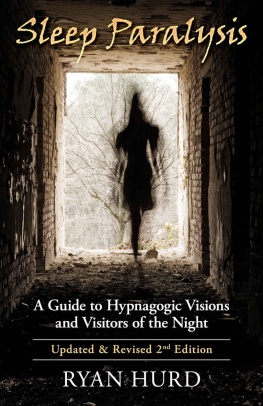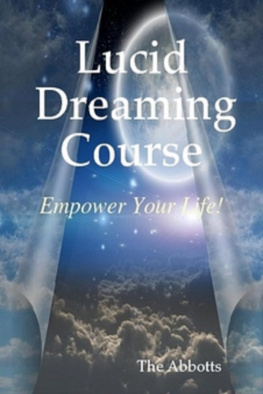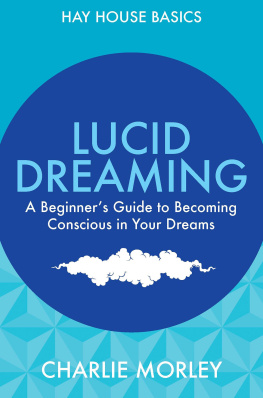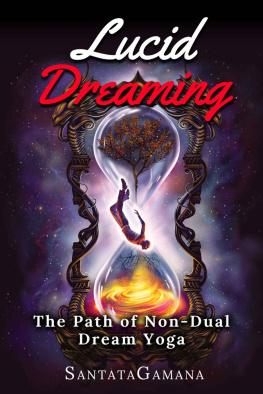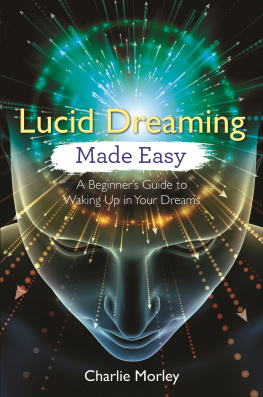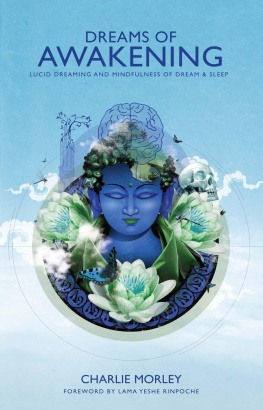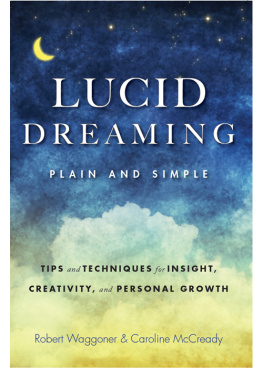INTRODUCTION
In 2006, I spent a month in Nicaragua, investigating pre-Columbian rock art. I was volunteering my time as a field archaeologist to help record the delicate and endangered art on the volcanic island of Ometepe, some of which is thousands of years old.

There may be no dreamier place in the world than Ometepe Island, where ancient spirals, swirls and meanders decorate boulders that dot the fields and forested slopes. The mystery and power of the island has been celebrated for eons, as the indigenous peoples made their way across the choppy Lake Nicaragua to make their marks and honor the local spirits with ritual and ceremonies. Today, the cloud forest on the steep upper slopes of the massive volcano hides one of the densest concentrations of undocumented rock art in the world.
During my month in Nicaragua, I recorded over one hundred dreams, and had 12 lucid dreams as well. A lucid dream occurs when you are aware that youre dreaming, while still within the confines of sleep. The conditions of travel bring on lucid dreaming naturally, thanks to disturbances in sleep patterns as well as the heightened mental vigilance that comes with the excitement of adventure. Travel literally shakes us out of our habitual life patterns.
Luckily, I had anticipated this explosion of my dreamlife and was prepared.
On Ometepe Island, I focused my lucid dreams on the rock art imagery that filled my days. I wanted to see what my dreamlife would tell me about these sacred sites, even if they only exposed my own preconceived notions.
I further incited my dreaming mind by engaging in two crucial practices. First, I spent an hour each day at a specific rock art site, sitting in a quiet meditation that opened me up to non-rational ways of thinking. In the evenings, I sought lucid dreams by preparing for sleep mindfully.
These two practices reinforced each other, and the dreamworld opened up, inviting me in.
The resulting lucid dreams did much more than reveal my biases. Archaeological observations I had made and then disregarded actually surfaced in the dreams. These anomalies directed my focus towards new hypotheses about the significance of the sacred sites. More profoundly, I was invited into the stones to travel in a world between worlds, where mythology and destiny meet.
For example, in one dream I was shown how to see correctly. In one dream,
I see a [rock art] design [on a boulder] out of the corner of my eyes, but it disappears when I focus on it. Then I think I see another, a small spiral pecked design, but it too disappears when I look directly. I notice then whats happening, that the designs are everywhere, all over the rocks, but only at the periphery of my vision. They blip in and out of existence at the edges of my visual field as I scan the rock faces. An amazing effect. After awakening, I realized the dream was showing me how to use my peripheral vision in the field, a useful method for detecting faded images on stone. Metaphorically, the dream also instructed me to balance my Western "eyes" (the gaze of precision and isolation) with a view that takes in all perceptions as a whole, especially those at the periphery, or boundaries, of my awareness.
Once I came back home to my ordinary lifea world of work, responsibilities and daily habitsmy lucid dreams retreated once again to their default levels. For me, this is about one or two spontaneous lucid dreams a month. Some months, there are none.
It occurred to me that traveling around the world is a wonderful way to easily go lucid, but surely there is a more practical way to do it, without having to get a passport and suspend ordinary life for a month at a time.
You have probably read about induction techniques for lucid dreams, such as reality checks, recognizing dream signs, and Stephen LaBerges MILD practice. These classic induction techniques can make a big difference, but theres still not a magic bullet for lucid dreaming, and many people have trouble breaking through.
Why isnt the success rate higher?
I took another look at my condition on Ometepe Island, and realized that during the trip, I was meditating, hiking, journaling, and making strong intentions before going to bed. In my normal life, Im lucky to do one of these things in a given day.
It came to me in a flash: the secret to lucid dreaming is not about finding the miracle technique, its about saturation: a short period of time marked by waking practices that together encourage lucidity by addressing the entire mind-body ecology.
This is how Lucid Immersion was born. Just like the best way to learn a new language, lucidity comes more quickly when you are immersed in the conditions that push you past your comfort zone and that everyday haze of habit and expectation.
Before laying out the holistic blueprint for lucid immersion in everyday life, this book teaches you how to prepare for lucid dreaming, and what to expect from this profound altered state of consciousness. After all, we dont go lucid in a vacuum, but during the weird and wonderful dream state. This review is drawn from ancient lore prized by the worlds wisdom traditions as well as the latest dream research: the best of the old ways and the new.

Chapter 1
Building the Foundation
"And perhaps many a one, like myself, recollect having sometimes called out cheeringly and not without success amid the dangers and terrors of dream life, It is a dream! I will dream on!
Friedrich Nietzsche
Lucid dreaming may be the most profound skill I have ever learned. My dreams have helped forge my identity, and temper my soul. With practice, I think the same electrifying possibilities await you.
Lets be honest though. Much has been made about the claim that lucid dreaming is a learnable skill. Truthfully, not everyone will succeed in achieving self-awareness during the dream state. Like all worthy goals, mastering lucid dreaming takes practice, patience, and persistence.
Still, the odds are pretty good.
In a 2009 study of demographically diverse American adults, dream researcher Kelly Bulkeley found that 62% report having had at least one dream in which they were aware. Demographically, women seem to have more lucid dreams then men, and young people may be easier to teach than older individuals.
But demographics are not destiny. The central goal of this book is to identify the practices that will dramatically increase your lucid odds. Secondly, the book provides a structure for developing a personal life practice that encourages lucid dreams naturally.
Add patience and persistence to this valuable skill set, and you will succeed, likely within just a few weeks.

The Importance of Grounding
Many masters of lucid dreaming do not teach their methods publicly because popular culture does not take lucid dreaming seriously. Lets be clear: although I am a dreaming expert, I do not consider myself a master. My lucid story is still unfolding and I have much to learn.


